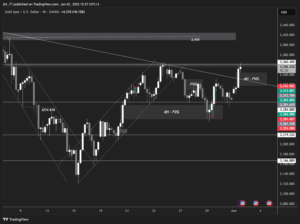This week is expected to be a busy one, with the release of the US jobs report on Friday, testimony from Federal Reserve Chair Jerome Powell, and a European Central Bank policy meeting. Here’s what you need to know to start your week.
Nonfarm payrolls
The monthly jobs report due out on Friday will be closely watched as investors try to gauge the timing of the first Federal Reserve interest rate cut, with bets centered on June amid hopes that the central bank can engineer a soft landing for the economy.
Signs of continued strength in the labor market could make it difficult for investors to ignore concerns that a stronger-than-expected economy could rekindle inflation if the Fed starts easing too soon.
Powell testimony
Ahead of the jobs data on Friday, investors will get a chance to hear from Fed Chair Jerome Powell in his semi-annual testimony on monetary policy before the House Financial Services Committee on Wednesday and the Senate Banking Committee on Thursday.
Powell is expected to reiterate that policymakers will take a cautious approach to determining when to start cutting rates in light of recent data pointing to economic strength and continued price pressures.
Richmond Fed President Thomas Barkin said on Friday that it is too early to say when the central bank will start cutting its benchmark interest rate, as price pressures are still evident in the US economy.
Economists expect the economy to have added 190,000 jobs in February after a blockbuster 353,000 gain in January, which was the largest in a year. The unemployment rate is expected to hold steady at 3.7%, while wage growth is expected to be moderate.
Gold hits two-month high: This is what’s driving prices higher
Gold prices steadied near a two-month high on Monday, after economic data from the United States last week boosted the likelihood of the Federal Reserve cutting interest rates in June.
“The main drivers for gold are what’s going to happen on the interest rate front – and we saw a move higher in prices on Friday because a string of economic data releases in the US that are encouraging the Fed to cut rates sooner than previously expected.”
Gold prices rose about $50 last week on the back of easing price pressures according to the Fed’s preferred inflation gauge.
Data from the University of Michigan showed that its consumer sentiment index fell 2.7% on a monthly basis to 76.9 points in the February reading, down from 79 points in January and compared to an initial reading of 79.6 points. Meanwhile, markets are looking ahead to the release of the US employment report for February due out on Friday.
Gold and the dollar now
Gold futures are now down 0.1% to $2094 an ounce. While spot gold is up about 0.14% to $2086 an ounce. This is the level it saw on Friday when the contract hit its highest level since December 28. On the other hand, the US dollar index is flat at 103.797 points.
Other metals
Platinum fell 0.7% in spot trading to $884.35 an ounce, while palladium rose 0.1% to $956.53. The two metals have fallen more than 10% so far this year. Platinum mining companies in South Africa are facing a crisis as prices fall. Silver fell 0.4% in spot trading to $23.06.
Oil rises after OPEC+ extends production cuts
Oil prices rose on Monday after OPEC+ members agreed to extend voluntary production cuts of 2.2 million barrels per day into the second quarter of the year, largely in line with market expectations.
The production cuts, which are being implemented by the Organization of the Petroleum Exporting Countries (OPEC) and its allies, are expected to protect the market amid global economic concerns and rising output outside the group, while Russia’s announcement of additional export and production cuts surprised some analysts.
Russian Deputy Prime Minister Alexander Novak said on Sunday that Russia will cut oil production and exports by an additional 471,000 barrels per day in the second quarter of the year. Oil prices have been supported in 2024 by rising geopolitical tensions amid the conflict between Israel and the Palestinian Islamic Resistance Movement (Hamas) and Houthi attacks on commercial ships in the Red Sea, although concerns about economic growth have weighed.
For further insights, check OneRoyal’s Facebook, Instagram, and Twitter pages and expand your understanding of financial markets with global perspectives. Staying informed is crucial in the ever-evolving world of finance.
Disclaimer: This article is not investment advice or an investment recommendation and should not be considered as such. The information above is not an invitation to trade and it does not guarantee or predict future performance. The investor is solely responsible for the risk of their decisions. The analysis and commentary presented do not include any consideration of your personal investment objectives, financial circumstances, or needs.





